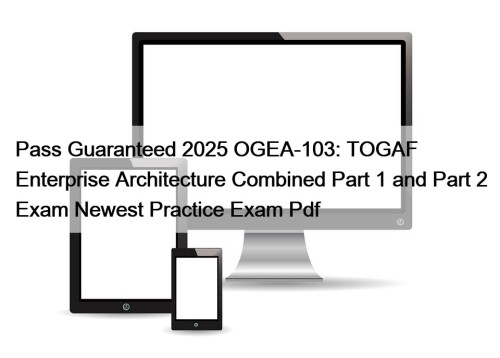Most Popular
 High Hit Rate GRC Professional Certification Exam Test Torrent Has a High Probability to Pass the Exam
High Hit Rate GRC Professional Certification Exam Test Torrent Has a High Probability to Pass the Exam
The high quality and high efficiency of GRCP study guide ...
 Pass Guaranteed 2025 OGEA-103: TOGAF Enterprise Architecture Combined Part 1 and Part 2 Exam Newest Practice Exam Pdf
Pass Guaranteed 2025 OGEA-103: TOGAF Enterprise Architecture Combined Part 1 and Part 2 Exam Newest Practice Exam Pdf
What's more, part of that Pass4cram OGEA-103 dumps now are ...
 Actual OGEA-103 Test Answers - Best OGEA-103 Study Material
Actual OGEA-103 Test Answers - Best OGEA-103 Study Material
P.S. Free & New OGEA-103 dumps are available on Google ...



Latest NFPA CFI-I Test Preparation - Reliable CFI-I Exam Dumps

There are three versions of CFI-I training materials for the candidate of you, and different versions have different advantages, you can use it in accordance with your own habit. Free update for each version for one year, namely, you don’t need to buy the same version for many times, and the update version will send to you automatically. You will get the latest version of CFI-I Training Materials.
NFPA CFI-I Exam Syllabus Topics:
| Topic | Details |
|---|---|
| Topic 1 |
|
| Topic 2 |
|
| Topic 3 |
|
| Topic 4 |
|
>> Latest NFPA CFI-I Test Preparation <<
Free Download Latest CFI-I Test Preparation & Useful Reliable CFI-I Exam Dumps & The Best NFPA Certified Fire Inspector I (CFI-1)
For most people who have no much time to prepare the NFPA real exam, latest CFI-I exam questions will be your excellent partner to help you get high passing score in the valid test. Once you receive our CFI-I Dumps Torrent, it will just need one or two days to practice test questions and answers. If you finished it well, clearing exam will be easy.
NFPA Certified Fire Inspector I (CFI-1) Sample Questions (Q42-Q47):
NEW QUESTION # 42
What is the minimum fire protection rating for a fire door in a 2-hour fire resistance-rated assembly that protects a refuse chute?
- A. 1 hour
- B. ½ hour
- C. 2 hours
- D. 1½ hours
Answer: D
Explanation:
Fire doors in fire resistance-rated assemblies must have a fire protection rating proportionate to the rating of the assembly they protect. According to NFPA 80, Standard for Fire Doors and Other Opening Protectives, and NFPA 101, Life Safety Code:
For a 2-hour fire resistance-rated assembly, the fire door protecting an opening (like a refuse chute) must have a minimum fire protection rating of 1½ hours (90 minutes).
The reduced rating for the door (relative to the wall) is allowed because doors are tested to prevent fire spread through openings for their specified rating period.
½ hour (A) and 1 hour (B) are insufficient for a 2-hour assembly.
2 hours (D) exceeds the requirement but is unnecessary unless specified for high-risk openings.
Reference:
NFPA 80, Table 4.2.1.1: Fire door ratings based on fire resistance-rated assemblies.
NFPA 101, Section 8.3.4.2: Fire door requirements for vertical openings like refuse chutes
NEW QUESTION # 43
What is the maximum travel distance from point A (fire extinguisher) to point B for the occupancy hazard associated with the floorplan?
- A. 75 ft (22.9 m)
- B. 100 ft (30.5 m)
- C. 50 ft (15.3 m)
- D. 25 ft (7.6 m)
Answer: A
Explanation:
Comprehensive and Detailed Step-by-Step Explanation:
Fire Extinguisher Travel Distance:
According to NFPA 10 (Standard for Portable Fire Extinguishers), Section 6.2.1, the maximum travel distance to a fire extinguisher depends on the hazard classification:
Light Hazard: 75 ft (22.9 m).
Ordinary Hazard: 75 ft (22.9 m).
Extra Hazard: 50 ft (15.3 m).
Why 75 Feet is Commonly Used:
For most general occupancies with light or ordinary hazards, the maximum allowable travel distance is 75 feet.
Other Options Explained:
Option A (25 ft): Used for Class K extinguishers in kitchens or special hazards.
Option B (50 ft): For higher hazard areas (extra hazard).
Option D (100 ft): Exceeds the NFPA 10 limits.
Summary:
The maximum travel distance to a fire extinguisher in light or ordinary hazard occupancies is 75 feet (22.9 m).
NEW QUESTION # 44
What is the minimum number of separate and remote means of egress in a new assembly occupancy with an occupant load greater than 1,000?
- A. 0
- B. 1
- C. 2
- D. 3
Answer: C
Explanation:
Comprehensive and Detailed Step-by-Step Explanation:
Egress Requirements for Assembly Occupancies:
According to NFPA 101 (Life Safety Code), Section 12.2.4.1, a new assembly occupancy with an occupant load exceeding 1,000 people requires a minimum of 4 separate and remote means of egress.
Why Four Egress Routes Are Required:
Larger occupant loads increase the risk of congestion during an evacuation.
Multiple egress routes ensure occupants can safely evacuate without crowding or delays.
Other Options Explained:
Option A (1), Option B (2), and Option C (3):
These options do not meet the requirements for occupant loads exceeding 1,000 in new assembly occupancies.
Summary:
A new assembly occupancy with an occupant load greater than 1,000 requires a minimum of 4 separate and remote means of egress to ensure safe evacuation.
NEW QUESTION # 45
Labels for individual containers, cartons, or packages of hazardous materials require which of the following?
- A. Marking consistent with the owner's requirements
- B. No special identification
- C. Unique color coding for all items with a posted key
- D. Conspicuous marking or labeling meeting national standards
Answer: D
Explanation:
Comprehensive and Detailed Step-by-Step Explanation:
Labeling Hazardous Materials:
Per NFPA 704 (Standard System for the Identification of the Hazards of Materials for Emergency Response) and OSHA regulations, hazardous materials must have conspicuous marking or labeling that meets recognized national standards.
Purpose of Conspicuous Marking:
Clear identification ensures emergency responders, workers, and occupants can recognize and handle hazardous materials safely.
Other Options Explained:
Option A (No special identification): Incorrect; labeling is mandatory.
Option B (Unique color coding): While color coding is part of the system, it must align with national standards, not a unique system.
Option D (Owner's requirements): Owner-specific markings may not comply with NFPA or OSHA standards.
Summary:
Hazardous material containers must have conspicuous marking or labeling meeting national standards.
NEW QUESTION # 46
In occupancies where a Class A or Class B interior finish is required, which of the following is the allowable amount of Class C materials?
- A. 15 percent
- B. 20 percent
- C. 10 percent
- D. 5 percent
Answer: C
Explanation:
The use of interior finish materials is regulated by NFPA 101, Life Safety Code, Section 10.2.3. In occupancies where Class A or Class B interior finishes are required:
A limited percentage of Class C materials may be allowed as incidental decoration or finish, provided it does not pose significant fire risk.
The allowable amount of Class C materials is limited to 10 percent of the total wall and ceiling area within the space.
This restriction ensures that the overall fire performance of the interior finish remains within acceptable safety limits.
5 percent (A): Too restrictive compared to NFPA allowances.
15 percent (C) and 20 percent (D): Exceed the permissible amount under Class A or B requirements.
Reference:
NFPA 101, Section 10.2.3: Interior finish requirements and allowable material classifications
NEW QUESTION # 47
......
Whether you prefer web-based practice exam, desktop-based exam, or PDF real questions, we've got you covered. We believe that variety is key when it comes to NFPA CFI-I Exam Preparation, and that's why we offer three formats that cater to different learning styles and preferences.
Reliable CFI-I Exam Dumps: https://www.examcollectionpass.com/NFPA/CFI-I-practice-exam-dumps.html
- NFPA Latest CFI-I Test Preparation: Certified Fire Inspector I (CFI-1) - www.prep4away.com High-effective Company 🍵 Immediately open 《 www.prep4away.com 》 and search for [ CFI-I ] to obtain a free download 🐘Exam CFI-I Simulator Fee
- CFI-I Valid Test Camp 🏊 CFI-I Mock Exam 🦑 CFI-I Pdf Pass Leader 🦛 Open ✔ www.pdfvce.com ️✔️ enter ▛ CFI-I ▟ and obtain a free download 🕤Brain CFI-I Exam
- Valid Dumps CFI-I Questions 📆 CFI-I Valid Mock Exam 🥤 CFI-I Valid Mock Exam 🤮 ☀ www.examcollectionpass.com ️☀️ is best website to obtain ▛ CFI-I ▟ for free download 🕕Reliable Study CFI-I Questions
- CFI-I Valid Test Question 🕤 Valid Dumps CFI-I Questions 🥜 Valid Test CFI-I Test 🥮 Go to website ⏩ www.pdfvce.com ⏪ open and search for 【 CFI-I 】 to download for free 🥕New CFI-I Test Pattern
- Pass Guaranteed NFPA - CFI-I Authoritative Latest Test Preparation 🦎 Search for [ CFI-I ] and easily obtain a free download on ➽ www.torrentvce.com 🢪 🍬Reliable Study CFI-I Questions
- Exam CFI-I Simulator Fee 🐟 New CFI-I Exam Experience 🎶 Exam CFI-I Simulator Fee 😼 Easily obtain free download of { CFI-I } by searching on ➥ www.pdfvce.com 🡄 📒CFI-I Certification Practice
- CFI-I Mock Exam 🔐 CFI-I Exam Test 👟 Valid Dumps CFI-I Questions 🚔 Search for ➽ CFI-I 🢪 and download it for free immediately on { www.prep4pass.com } 🦠CFI-I Valid Test Question
- CFI-I Reliable Practice Questions 🦩 CFI-I Pdf Pass Leader 🦮 Valid Dumps CFI-I Questions 😺 Easily obtain free download of ➡ CFI-I ️⬅️ by searching on ⮆ www.pdfvce.com ⮄ ✨CFI-I Exam Test
- Ample Study Material for NFPA CFI-I Exam Questions - Attain Exam Success 🏫 Search for ➡ CFI-I ️⬅️ and download it for free on ➥ www.passcollection.com 🡄 website 🟠CFI-I Valid Test Camp
- NFPA Latest CFI-I Test Preparation: Certified Fire Inspector I (CFI-1) - Pdfvce High-effective Company 📋 Search for ✔ CFI-I ️✔️ and obtain a free download on ⏩ www.pdfvce.com ⏪ 🐞CFI-I Reliable Practice Questions
- Pass Guaranteed Quiz 2025 The Best NFPA Latest CFI-I Test Preparation 🎇 { www.passcollection.com } is best website to obtain ⮆ CFI-I ⮄ for free download 🦄CFI-I Mock Exam
- CFI-I Exam Questions
- hindufy.me www.teachmenow.eu markmil342.blogproducer.com homehubstudy.com www.dprjw.com uniquelearns.com desifarm.foodbuffet.in bbs.tejiegm.com 182.官網.com courses.fearlesstraders.in
Tags: Latest CFI-I Test Preparation, Reliable CFI-I Exam Dumps, Latest CFI-I Mock Test, Exam CFI-I PDF, CFI-I Exam Discount Voucher